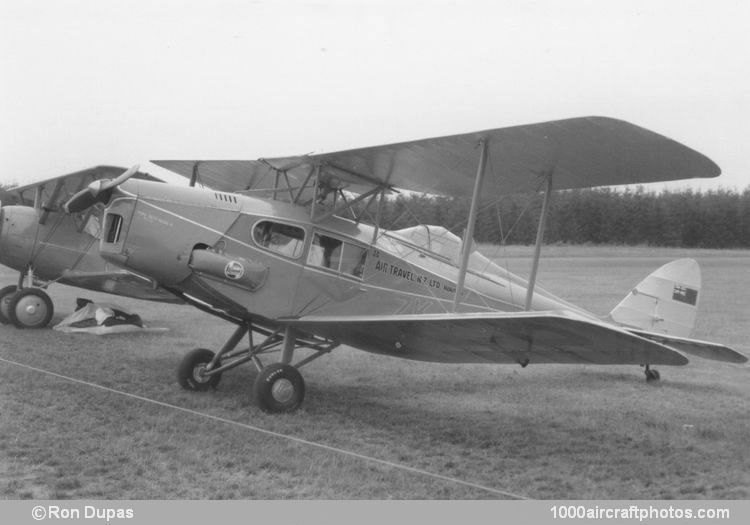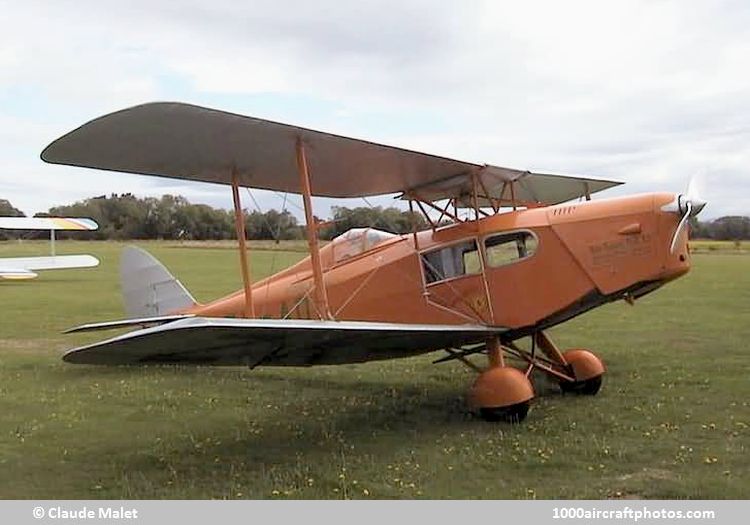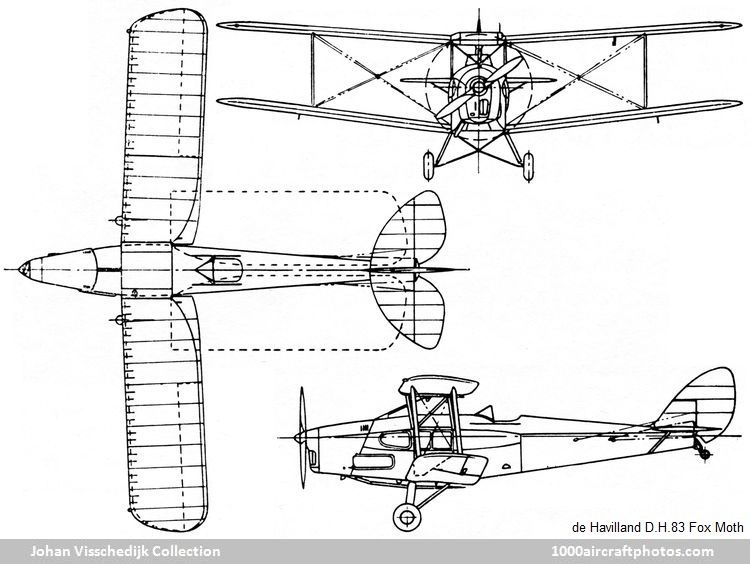03/31/2022. Remarks by Johan Visschedijk: "The early 1930s saw the establishment of short domestic and feeder airlines in all parts of the world on which a number of Puss Moths were used for want of a type more suited to the task. To meet the obvious requirement for something more roomy and economical, chief designer Arthur E. Hagg designed an aircraft which would be not only cheap but have a useful performance while carrying the maximum possible payload on the power of one 120 hp de Havilland Gipsy III engine.
The result was the D.H.83 Fox Moth, unquestionably the first British aircraft to support itself financially in the air. Low initial cost resulted from using standard D.H.82 Tiger Moth mainplanes, tail unit, landing gear and engine mounting, the only new major component being the fuselage. That became a spruce and plywood construction with accommodation for four passengers in an enclosed cabin with the pilot in an open cockpit aft. On short pleasure flights it would carry five adults on a mere 120 hp, an astonishing feat of weight lifting which has seldom been equaled. If extra fuel was carried in place of the fourth passenger, a range of 360 mls (579 km) was possible.
Design and construction took initially place at de Havilland Aircraft Co. Ltd., Stag Lane Aerodrome, Edgware, Middlesex, in 1934 the works were transferred to Hatfield Aerodrome, Hertfordshire. A total of 98 Fox Moths was built in England, all except the prototype having narrow chord steel tubular interplane struts.
G-ABUO (c/n 4000), the prototype, first flown at Stag Lane on January 29, 1932 was shipped to Canada and evaluated on floats and skis by Canadian Airways Ltd. So sturdy was the design that it flew registered as CF-API for nearly twenty years, ending its useful life with Leavens Bros. at Toronto, Ontario in 1950. It was forerunner of seven Fox Moths erected from British built components at the de Havilland Aircraft of Canada Ltd., Downsview Aerodrome, Toronto.
In July 1932 W.L. Hope averaged 124.13 mph (199.77 kmh) to win his third King's Cup in the second production aircraft G-ABUT (c/n 4002). This had been modified for racing with an 130 hp Gipsy IIIA (later renamed Gipsy Major) engine, sliding cockpit canopy and a fuel tank in the cabin instead of the center section. The majority of production Fox Moths had Gipsy Major engines and about one-third had sliding hoods. These were occasionally referred to as the 'Speed Model' but there was no change of designation.
At least two Fox Moths were built in Australia by de Havilland Aircraft Pty. Ltd. at Bankstown Aerodrome, Sydney, New South Wales. A copy was also built in Japan by the Tokyo Gas and Electric Industry Co., registered J-BBJI and known as the Chidorigo, it was powered by an 150 hp seven cylinder radial engine similar to the Armstrong Siddeley Mongoose and named the Gasden Zimpu.
During the war years Fox Moths in Britain were camouflaged and impressed, three for Air Transport Auxiliary, three for a radar trials unit at Christchurch and one each to the Royal Navy and the Blackburn company as hacks. Four were impressed by the RAAF as well as a number by the RNZAF and after the war several were still flying in Britain, Australia, New Zealand, Canada and Spain.
After WW II came to an abrupt end in August 1945, de Havilland Aircraft of Canada decided to establish a production line at for an entirely Canadian-built Fox Moth designated D.H.83C. This was produced relatively cheaply using war surplus D.H.82C Tiger Moth components. Powered by a 145 hp Gipsy Major IC it carried a maximum of only three passengers. The cabin area was strengthened locally and the door on the port side was enlarged rearwards to facilitate the loading of bulky freight or stretchers, and the cockpit opening was widened and covered by a sliding coupe top of new design. A crash pylon, brakes and the D.H.82C tail wheel were fitted as standard. Mining, exploration and transport companies all over Canada seized upon the wheel, float or ski equipped D.H.83C as an indispensable maid-of-all-work pending the delivery of new postwar designs.
In all, 54 D.H.83Cs were built between January 1946 and December 1947. The last two sets of components were handed over for completion by Leavens Bros. Ltd. but only one, the 54th machine, actually flew in 1948.
Pictured on top of the page is the last Fox Moth produced in England, registered in New Zealand as ZK-ADI on January 29, 1935. Impressed into RNZAF service as NZ566 from April 1943 to August 1948. It went back on the civil register as ZK-ASP. Brought to the USA in 1974 it was sold as N83DH on August 23, 1975. On December 3, 1984, the aircraft was registered in the UK as G-ADHA.


